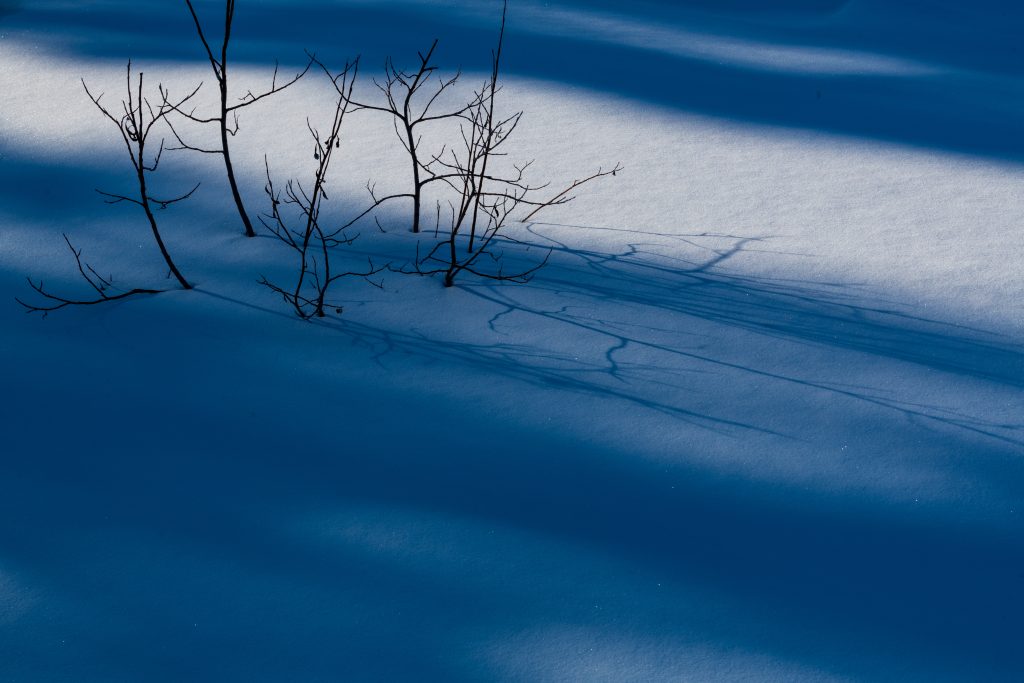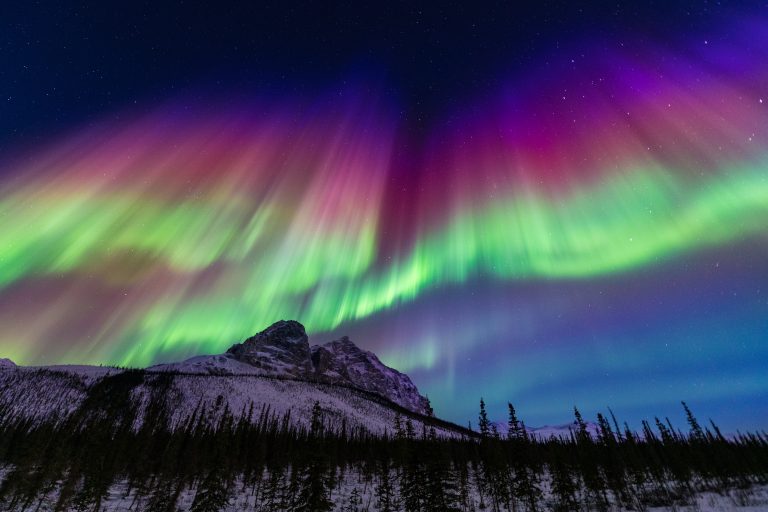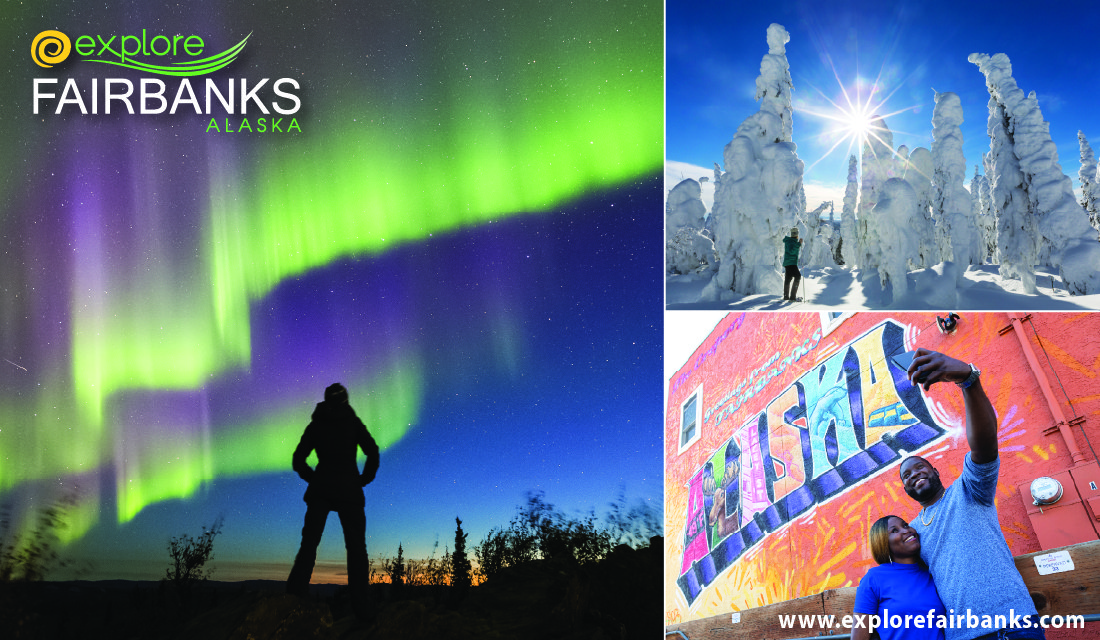My Love for Alaska’s Winter
Images and text by Carl Johnson
It is 6 a.m., and, while it is still pitch dark, the nearly full moon floats over Cook Inlet on its descent behind the Alaska Range. Its bright light and surrounding stars reveal a hillside’s silhouette with a layer of fog enveloping the Anchorage bowl below.

This is one of my favorite times of winter—when several days of calm, cold, and clear conditions and persistent ice fog create a landscape that might have inspired the movie Frozen. It is a winter wonderland, where everything is fresh and new, magical and mystical, and utterly beautiful. This, for me as a photographer, is one of the many reasons why I love winter in Alaska.

In any season, photography provides me a way to connect deeply with my natural surroundings. In winter, that experience is enhanced through a greatly simplified landscape, covered with snow that can be completely smooth and undisturbed, or scattered with tracks that tell a story about wildlife movements. Silence is punctuated by the crunch of snow under my snowshoes. The details of my surroundings are made stark through the long shadows cast by the sun that lingers most of the day just barely above the mountains to the south.

Winter provides so many opportunities to see things, so many areas to go that are inaccessible outside the season. Certain bird and wildlife populations are only visible in those colder months, like the Bohemian waxwings that come into Anchorage, or the many species of owls that take advantage of wooded areas to hunt for red-backed voles or snowshoe hares. Winter is the easiest time to see members of the central Arctic caribou herd as they linger in the area of the Chandalar Shelf along the Dalton Highway. And as the landscape transforms, so does the wildlife. Four species of animals turn completely white in winter: willow ptarmigan, arctic fox, snowshoe hare, and ermine. Frozen rivers, lakes, and wetlands solidify into highways that can be traversed with snowmachine or dog team.

Some may think of a snow-covered landscape as stark, drab, and boring, but winter is full of color. Pink alpenglow is most pronounced during the early months of the year, turning frosty mountains into bright cotton-candy swirls. Our sunrises and sunsets offer stunning hues of fuchsia, blue, purple, and gold, with color lingering an hour after sunset. On many clear, dark nights, the skies fill with the stunning kaleidoscope of the aurora borealis. Its streaks dance, reflecting onto the crystal canvas beneath it. Many color variations of the aurora can’t be seen with the naked eye, but the camera captures these light waves and accentuates them. The resulting images display neon brush strokes.

Even with the photographic benefits of winter in Alaska, my favorite part of the season is solitude—just me and nature. It gives me the greatest chance to tune my senses to my surroundings, to notice the many wondrous details: the crinkling sound of ice brushing up against the shore. The ice chunks floating by. It is in winter that I truly experience the world around me.

Award-winning photographer Carl Johnson is co-owner of Alaska Photo Treks (alaskaphototreks.com). He lives in Anchorage. See more of his work at arcticlight-ak.com.



Comments are closed.